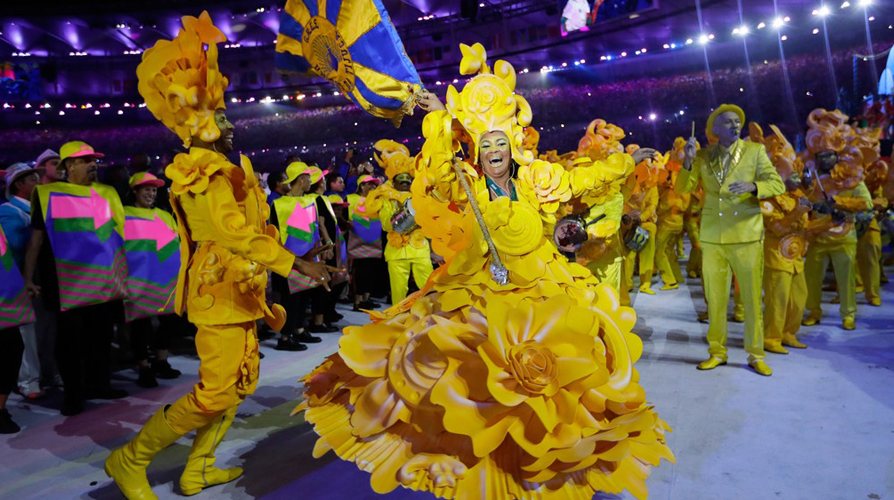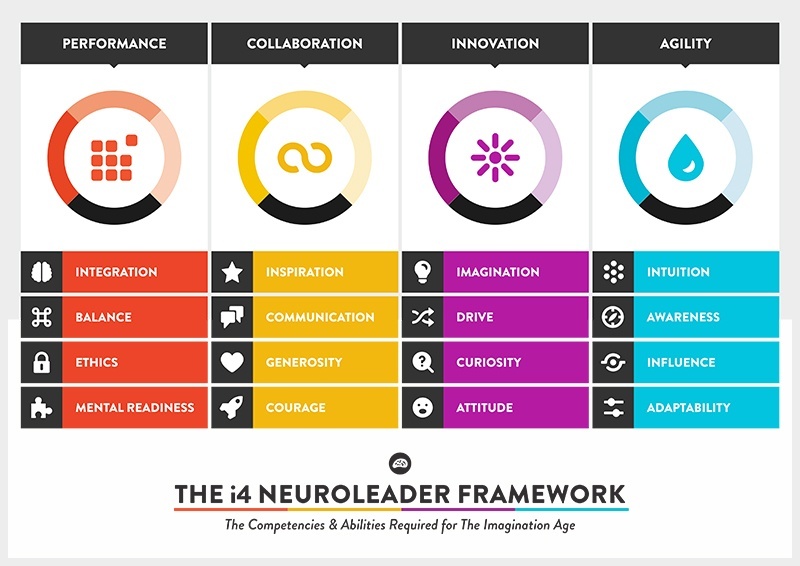Inspiring Yourself To Inspire Others
When you ask a little boy what he wants to be when he grows up, you will likely hear things like a football player, race car driver, astronaut, or movie star. Most children do not admit that they want to attend meetings and work in an office all day. While some people do become astronauts and race car drivers, the vast majority of us have more 'normal' professions. Why do children dream of incredible jobs, then?
Children are inspired by the world around them. A child sees a gymnast land an amazing move, with her head thrown back and arms in the air in a 'v' shape. The child wants to be that gymnast. She might train for years but never quite reach the level required to be an Olympic athlete.
But, she will still be inspired by the movements and the joy that she feels when she stretches and flips. She may instead become a coach and share her knowledge and love for the sport with other children. She can teach her students how to work together as a team and how to support each other through difficult moments.
Do you remember inspiring moments from your youth? Moments that made you whoop with joy and throw your arms up with sheer happiness?
Using Moments Of Joy For Inspiration At Work
According to a recent study, it is acceptable to display anger at work in 53% of cases, but it is only acceptable to show joy in 19% of cases. You would likely think nothing of watching a coworker slam down a phone angrily and then hearing them vent about the frustrating call.
But what if the same person had gently set down the phone, taken a deep breath, and expressed joy about their job and that the phone call was now completed? You'd probably think that your coworker was a bit weird.
However, which of these scenarios is more likely to inspire? The angry venting or the happy cheer? An inspired workplace will have more happiness than anger. Children aren't the only ones who can jump for joy or adopt a pose of victory.
Changing your physiology can positively affect the energy around you. Don't be afraid to stand like Superman or like an Olympic gymnast with a gold medal.
The next time you look at a pile of work in disgust or feel frustrated after speaking with a client, pause for a moment and take a deep breath. Adopt a pose that brings you joy and positivity. If you change your energy, you will be inviting others to do the same.
How Inspiration Relates To Collaboration
Inspiration is one of the 4 pillars under the competency of Collaboration in the i4 Neuroleader Model. Being able to inspire and motivate oneself can translate into inspiring and enthusing others.
The i4 Neuroleader Program will teach you how to develop your inspirational qualities and encourage collaboration from others.
5 Tips For Inspiration
- Listen to inspiring music
- Develop the habit of complimenting others
- Laugh often and be enthusiastic
- Avoid complaining or comparing
- Volunteer for a good cause
Science tells us that we are more likely to be inspired when we are in a positive emotional state and we feel the energy around us. Changing your physiology can influence this energy.
Finding what makes you happy will, in turn, make those around you feel that positivity and joy. Inspiration is not just what makes us want to do something; it is what makes us capable of greatness.
If your actions inspire others to dream more, learn more, do more and become more, you are a leader.
John Quincy Adams
- i4 Neuroleader (353)
- Leadership & Culture (333)
- Brain Health & Wellbeing (204)
- Innovation (97)
- Performance (85)
- Our News (79)
- Collaboration (68)
- Agility (53)
- Practitioner Stories (44)
- In The Press (36)
- Make Me A Leader (33)
- Balance (31)
- Integration (30)
- Imagination (29)
- Awareness (23)
- Brain-Friendly Channel (22)
- Communication (22)
- Curiosity (21)
- Brain-Friendly Leadership (19)
- Inspiration (19)
- Intuition (19)
- Attitude (17)
- Courage (16)
- Adaptability (14)
- Case Studies (14)
- Drive (14)
- Generosity (13)
- Ethics (9)
- Mental Readiness (9)
- Influence (8)
- Retreat (8)
- Brain-Friendly Leadership (1)
- Oracle Cards (1)
- 1 August 2025 (4)
- 1 July 2025 (5)
- 1 June 2025 (2)
- 1 April 2025 (1)
- 1 March 2025 (8)
- 1 February 2025 (3)
- 1 September 2024 (4)
- 1 July 2024 (2)
- 1 June 2024 (6)
- 1 May 2024 (2)
- 1 April 2024 (3)
- 1 March 2024 (1)
- 1 November 2023 (1)
- 1 August 2023 (1)
- 1 July 2023 (2)
- 1 June 2023 (2)
- 1 May 2023 (4)
- 1 April 2023 (2)
- 1 March 2023 (7)
- 1 February 2023 (4)
- 1 January 2023 (1)
- 1 September 2022 (1)
- 1 May 2022 (3)
- 1 April 2022 (1)
- 1 March 2022 (5)
- 1 February 2022 (4)
- 1 January 2022 (4)
- 1 December 2021 (2)
- 1 November 2021 (4)
- 1 October 2021 (3)
- 1 September 2021 (6)
- 1 August 2021 (1)
- 1 April 2021 (1)
- 1 December 2020 (2)
- 1 November 2020 (1)
- 1 September 2020 (1)
- 1 August 2020 (1)
- 1 July 2020 (3)
- 1 June 2020 (4)
- 1 May 2020 (3)
- 1 April 2020 (4)
- 1 March 2020 (6)
- 1 February 2020 (4)
- 1 January 2020 (2)
- 1 December 2019 (3)
- 1 November 2019 (3)
- 1 October 2019 (5)
- 1 September 2019 (4)
- 1 August 2019 (4)
- 1 July 2019 (4)
- 1 June 2019 (5)
- 1 May 2019 (9)
- 1 April 2019 (9)
- 1 March 2019 (8)
- 1 February 2019 (7)
- 1 January 2019 (8)
- 1 December 2018 (5)
- 1 November 2018 (10)
- 1 October 2018 (16)
- 1 September 2018 (9)
- 1 August 2018 (10)
- 1 July 2018 (9)
- 1 June 2018 (8)
- 1 May 2018 (9)
- 1 April 2018 (9)
- 1 March 2018 (9)
- 1 February 2018 (8)
- 1 January 2018 (8)
- 1 December 2017 (6)
- 1 November 2017 (9)
- 1 October 2017 (9)
- 1 September 2017 (8)
- 1 August 2017 (10)
- 1 July 2017 (8)
- 1 June 2017 (8)
- 1 May 2017 (9)
- 1 April 2017 (8)
- 1 March 2017 (6)
- 1 January 2017 (3)
- 1 December 2016 (4)
- 1 November 2016 (5)
- 1 October 2016 (4)
- 1 September 2016 (2)
- 1 August 2016 (4)
- 1 July 2016 (4)
- 1 June 2016 (2)
- 1 May 2016 (3)
- 1 April 2016 (3)
- 1 March 2016 (7)
- 1 February 2016 (2)
- 1 January 2016 (5)
- 1 December 2015 (2)
- 1 November 2015 (2)
- 1 October 2015 (4)
- 1 September 2015 (2)
- 1 August 2015 (2)
- 1 July 2015 (1)
- 1 June 2015 (3)
- 1 May 2015 (4)
- 1 April 2015 (5)
- 1 March 2015 (3)
- 1 February 2015 (3)
- 1 January 2015 (3)
- 1 December 2014 (3)
- 1 November 2014 (3)
- 1 October 2014 (3)
- 1 September 2014 (5)
- 1 August 2014 (4)
- 1 July 2014 (5)
- 1 June 2014 (3)
- 1 May 2014 (1)
- 1 March 2014 (1)
- 1 December 2013 (2)
- 1 November 2013 (1)
- 1 July 2013 (1)
- 1 June 2013 (1)
- 1 May 2013 (3)
- 1 April 2013 (1)
- 1 March 2013 (2)
- 1 February 2013 (1)
- 1 January 2013 (2)
- 1 November 2012 (1)
- 1 October 2012 (1)
- 1 September 2012 (1)
- 1 August 2012 (2)
- 1 July 2012 (1)
- 1 June 2012 (1)
- 1 May 2012 (2)
- 1 April 2012 (1)
- 1 February 2012 (1)
- 1 January 2012 (1)
- 1 November 2011 (1)
- 1 October 2011 (3)
- 1 September 2011 (2)
- 1 July 2011 (1)
- 1 June 2011 (1)
- 1 May 2011 (1)
- 1 April 2011 (1)
- 1 March 2011 (1)
- 1 February 2011 (2)
- 1 January 2011 (4)
- 1 December 2010 (4)
- 1 November 2010 (3)
- 1 October 2010 (5)
- 1 September 2010 (4)
- 1 August 2010 (4)
- 1 July 2010 (3)
- 1 June 2010 (4)
- 1 May 2010 (7)
- 1 April 2010 (5)
Subscribe by email
You May Also Like
These Related Stories

Drive Is The Inspiration To Never Quit

Enhance Collaboration Through An Inspiring Self




No Comments Yet
Let us know what you think